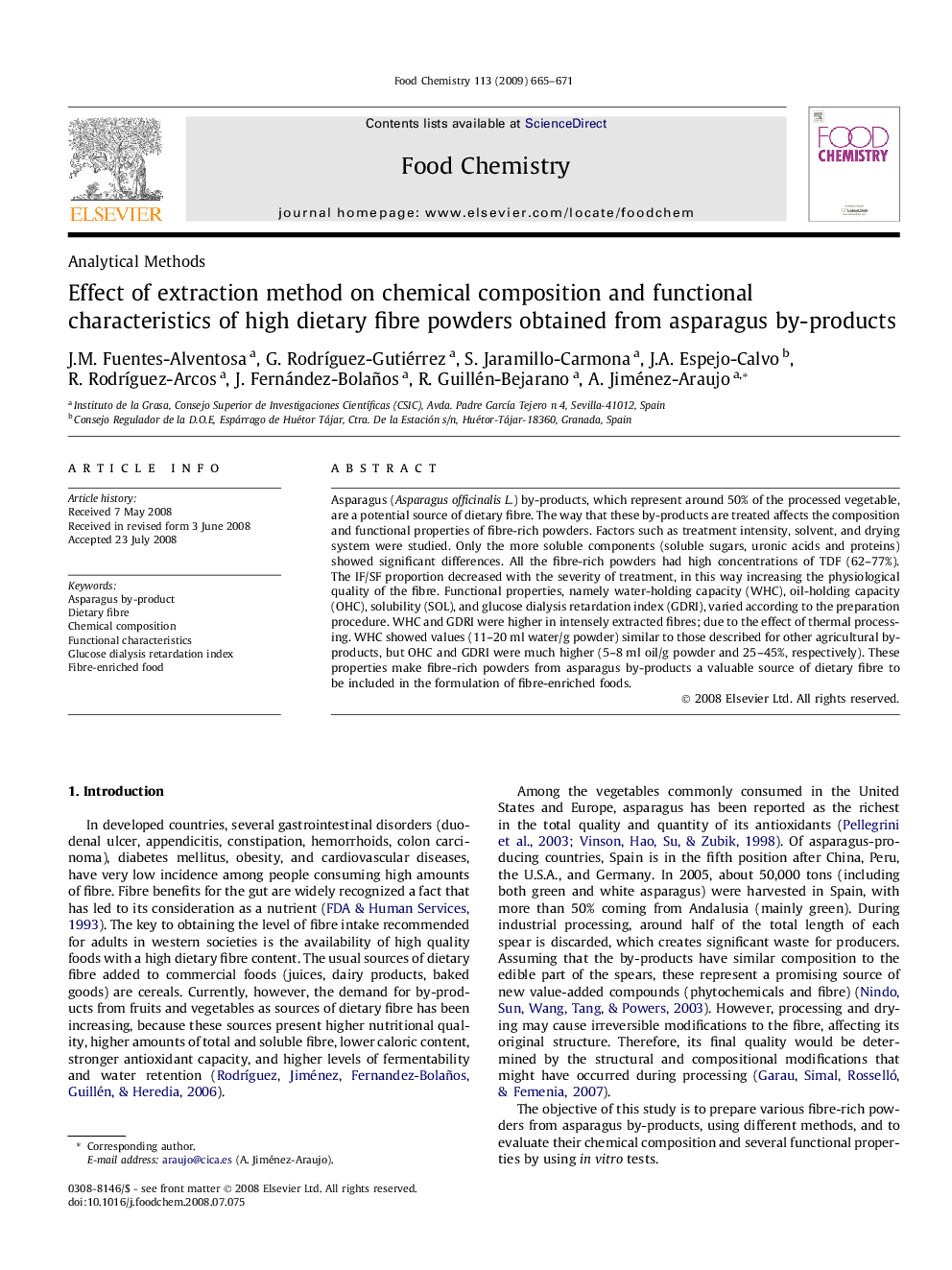| کد مقاله | کد نشریه | سال انتشار | مقاله انگلیسی | نسخه تمام متن |
|---|---|---|---|---|
| 1191311 | 963554 | 2009 | 7 صفحه PDF | دانلود رایگان |

Asparagus (Asparagus officinalis L.) by-products, which represent around 50% of the processed vegetable, are a potential source of dietary fibre. The way that these by-products are treated affects the composition and functional properties of fibre-rich powders. Factors such as treatment intensity, solvent, and drying system were studied. Only the more soluble components (soluble sugars, uronic acids and proteins) showed significant differences. All the fibre-rich powders had high concentrations of TDF (62–77%). The IF/SF proportion decreased with the severity of treatment, in this way increasing the physiological quality of the fibre. Functional properties, namely water-holding capacity (WHC), oil-holding capacity (OHC), solubility (SOL), and glucose dialysis retardation index (GDRI), varied according to the preparation procedure. WHC and GDRI were higher in intensely extracted fibres; due to the effect of thermal processing. WHC showed values (11–20 ml water/g powder) similar to those described for other agricultural by-products, but OHC and GDRI were much higher (5–8 ml oil/g powder and 25–45%, respectively). These properties make fibre-rich powders from asparagus by-products a valuable source of dietary fibre to be included in the formulation of fibre-enriched foods.
Journal: Food Chemistry - Volume 113, Issue 2, 15 March 2009, Pages 665–671